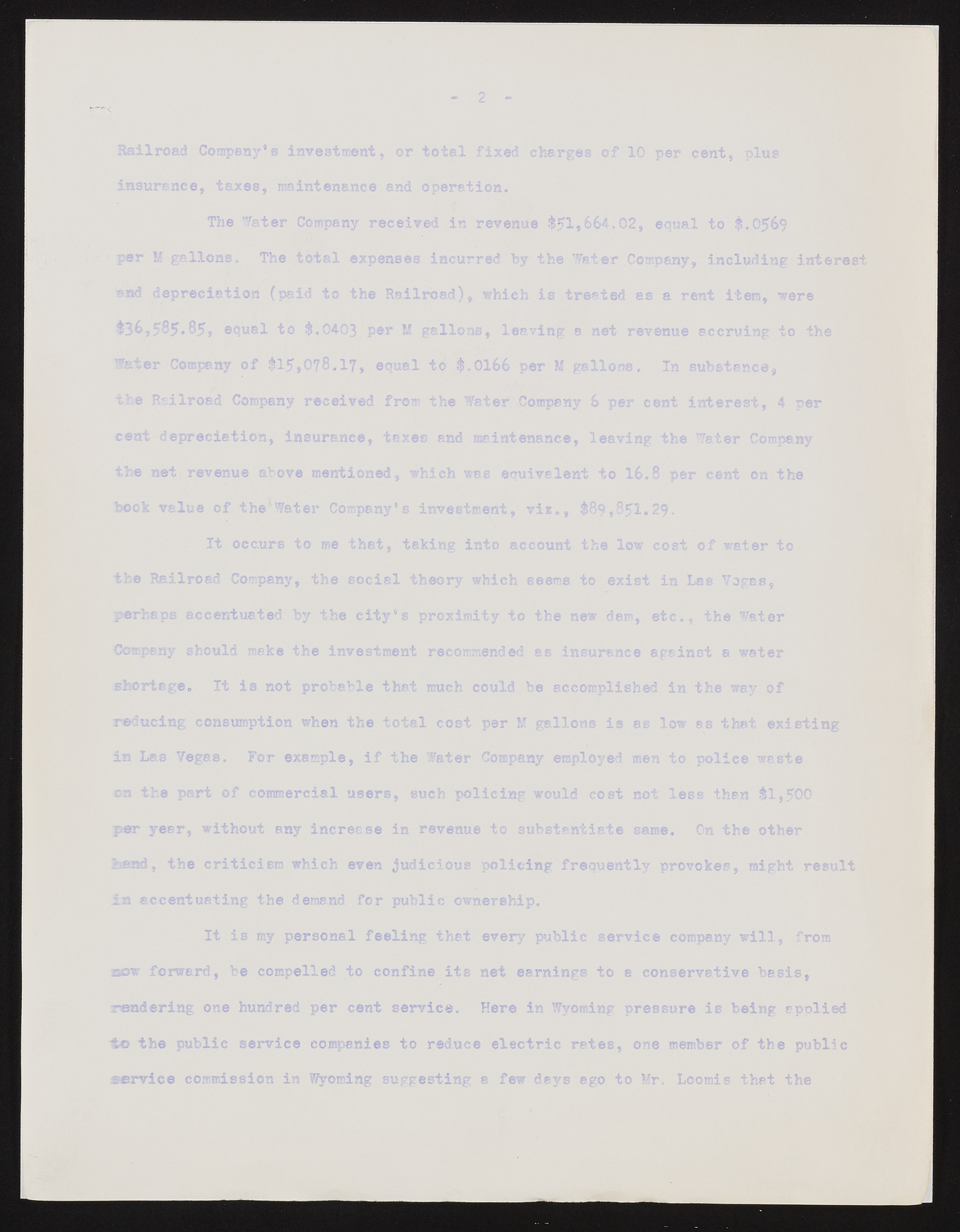Copyright & Fair-use Agreement
UNLV Special Collections provides copies of materials to facilitate private study, scholarship, or research. Material not in the public domain may be used according to fair use of copyrighted materials as defined by copyright law. Please cite us.
Please note that UNLV may not own the copyright to these materials and cannot provide permission to publish or distribute materials when UNLV is not the copyright holder. The user is solely responsible for determining the copyright status of materials and obtaining permission to use material from the copyright holder and for determining whether any permissions relating to any other rights are necessary for the intended use, and for obtaining all required permissions beyond that allowed by fair use.
Read more about our reproduction and use policy.
I agree.Information
Digital ID
Permalink
Details
Member of
More Info
Rights
Digital Provenance
Publisher
Transcription
Railroad Company’s investment, or total fixed charges of 10 per cent, plus insurance, taxes, maintenance and operation. The 7/ater Company received in revenue $51?664.02, equal to $.0569 per M gallons. The total expenses incurred by the Water Company, including interest and depreciation (paid to the Railroad), which is treated as a rent item, were $3 6 ,585.85, equal to $.0403 per M gallons, leaving a net revenue accruing to the Water Company of $1 5 ,078.1 7 , equal to $.0166 per M gallons. In substance, the Railroad Company received from the Water Company 6 per cent interest, 4 per cent depreciation, insurance, taxes and maintenance, leaving the Water Company the net revenue above mentioned, which was equivalent to 16.8 per cent on the book value of the4Water Company’s investment, viz., $89,8 5 1.29. It occurs to me that, taking into account the low cost of water to the Railroad Company, the social theory which seems to exist in Lae Yogas, perhaps accentuated by the city’s proximity to the new dam, etc., the Water Company should make the investment recommended as insurance against a water shortage. It is not probable that much could be accomplished in the way of reducing consumption when the total cost per M gallons is as low as that existing in Las Vegas. For example, if the Water Company employed men to police waste on the part of commercial users, such policing would cost not less than $1,500 per year, without any increase in revenue to substantiate same. On the other bead, the criticism which even judicious policing frequently provokes, might result in accentuating the demand for public ownership. It is my personal feeling that every public service company will, from now forward, be compelled to confine its net earnings to a conservative basis, rendering one hundred per cent service. Here in Wyoming pressure is being applied •to the public service companies to reduce electric rates, one member of the public service commission in Wyoming suggesting a few days ago to Mr. Loomis that the

